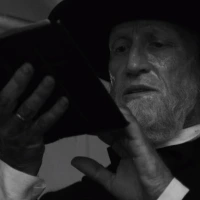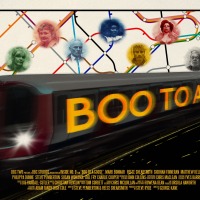 The Doctor and the TARDIS team return to northern England, this time in the 17th century, and discover something malevolent lurking beneath the ground.
The Doctor and the TARDIS team return to northern England, this time in the 17th century, and discover something malevolent lurking beneath the ground.
Atmospheric, witty and engaging – this was a successful historical instalment in this series with a surprisingly ironic edge.
I’ve approached each episode this series with a mixture of excitement and trepidation – excitement because the central concepts of the stories have been so strong and original, trepidation because the execution of these concepts have not been completely successful. In the case of The Witchfinders, the concept was a more conventional one for modern Doctor Who: the Doctor meets James I (VI of Scotland) in Lancashire and finds herself embroiled in the Jacobian witch hunts with added mud-monsters. In this case, however, the execution made the simpler concept shine and my excited anticipation for the story was justified.
In many respects I’m the ideal viewer for this episode. I have an academic background in Witchcraft studies and a fondness for the folk horror cycle of British horror movies, particularly The Blood on Satan’s Claw and Witchfinder General, both clear influences for writer Joy Wilkinson. There was a pleasing depth of detail throughout this story, from the authentic feeling sets and the wintery location work to the period design touches. These include lovingly recreated copies of King James’s Daemonologie (his self-penned witch hunting guide), and fabricated witchcraft pamphlets resembling the notorious Newes from Scotland (an account of a witch trial from 1591 and an influence on James’s Daemonologie). Unlike previous historical stories this series that prioritised accuracy and sincerity, these authentic details were balanced by a pleasing irony from an outlandishly heightened performance by Alan Cumming as James (“careful – it’s my pricker”) and the fully developed, fairy-tale concept of Pendle Hill as an alien prison. In terms of its depiction of witchcraft, the story was a mixture of the clichéd (ducking stools, mobs of angry/terrified villagers) and the surprisingly insightful (a combination of a class and gender struggle and, for James, a source of real political paranoia).
To understand the witchcraft craze of the time, it is necessary to understand the tensions between high and low society, and this episode took full advantage of this, presenting and exploring the complex interrelationships between the layers of the village society. James’s presence is an unlikely and disruptive addition to this power relationship – but this potentially dislocating narrative step is forgiven when Cumming’s decision to ramp up the theatricality of the historical figure becomes clear. The writing throughout this episode is genuinely witty – unlike previous stories where, for me, the comedy has felt like a clumsy attempt to mimic Moffat or Davies. This lightness covers up any plot holes and makes up for the clunky expository dialogue that seems to be in fashion this year.
Finally, the Doctor and her friends are able to have an adventure in history. The two previous historical stories this series – Rosa and Demons of the Punjab – have been worthy, original and refreshing, but there has been a disconnection between the time travellers and the events, as if travelling in the TARDIS has become a way of witnessing history rather than engaging with it. In The Witchfinders, we finally see the TARDIS team getting their hands dirty (quite literally) and becoming involved in the event around them. In some ways this is a retrogressive step back towards ideas and stories we have seen before – but in the context of this year it is like a refreshing injection of drama.
Solid and dramatic, this episode taps into a seam of folkloric horror that is surprisingly rarely mined in Doctor Who and when it is, it is rarely mined so efficiently and effectively. The Witchfinders is a witty and welcome historical interlude in a series that, for me has hasn’t yet realised the potential of its concepts.
Verdict: A welcome return of folkloric horror. 9/10
Matt Barber











